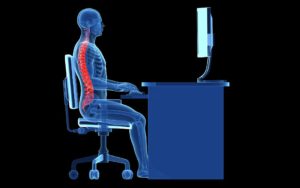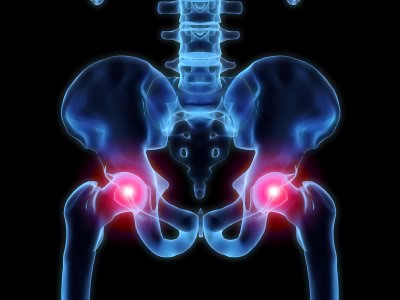
Our next blog and video series are on workstation ergonomics. Poor work ergonomics are a burden on the health care system and also one of the most common reasons for visits to Chiropractors.
The reason why poor work ergonomics cause pain is due to cumulative trauma disorder or  repetitive stress injury. This means when muscles are in a shortened or stretched position for an excessive amount of time, injury occurs which causes scar tissue to build up. Scar tissue makes muscles less flexible and weaker and more susceptible to injury.
repetitive stress injury. This means when muscles are in a shortened or stretched position for an excessive amount of time, injury occurs which causes scar tissue to build up. Scar tissue makes muscles less flexible and weaker and more susceptible to injury.
Workstation ergonomic assessment
Most common ergonomic injuries
- Neck pain
- Headaches
- Middle back pain
- Lower back pain
- Carpal tunnel syndrome
Most common biomechanic deficiencies from sitting
- Tight pectoral muscles
- Weak upper back muscles
- Tight hip flexors
- Weak glutes
- Tight forearm muscles
- Decreased shoulder and hip flexibility
Workstation Ergonomic Mini Checklist
- Hips and knees bent to 90 degrees
- Chair angled slightly backward
- Top of monitor is at eye level
- Elbows bent to sides at 90 degrees
Tips for Workstation
- Microbrakes every 15-30 minutes. Even if you just stand up for 10 seconds.
- To maintain proper posture think “sternum up”
- Laptop use
- Bring laptop up so screen is eye level and use wireless keyboard and mouse
- Use laptop keyboard/mouse and connect to an additional screen at eye level
- Varidesk
- Sitting on exercise ball or chair without a back does not increase core strength
- Monitor and keyboard are straight in line with your body. If using multiple screens, have the main one in line and the secondary screen off to the side.
- No wallet in the back pocket- This makes your pelvis and lower back uneven
- Avoid these sleeping positions
- Stomach sleeping places excessive stress on the neck and lower back that you are already getting from working
- Fetal position sleeping on side also shortens the hip flexors, similar when sitting for extended periods of time
Best Stretches
- Neck stretches and retractions
- Shoulder retractions
- Wrist stretches and circles
- Hip flexor stretches
- Standing knee raises

